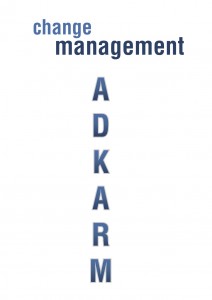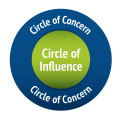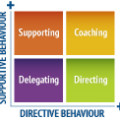As a contract trainer you may be required to run training programs of many different types. You are often required because there is some sort of change taking place and you are partly responsible for making it work.
This flip chart is an easy change management model to explain to folks. It’s also a handy reference guide for you to to refer to as you seek to enable some of the change you are responsible for engaging in the people in your training room.
How to build your own compass for the change process
The following description is simplified for blog writing purposes, but most change works like this.
Awareness – The first thing that evokes change is the awareness that a change is needed. We should be diligent to ensure that awareness is raised, ideally before the training program. What you may often find is a need to build that awareness early on in your training program if the L&D folks or the training sales rep hasn’t done a proper job of defining the training need.
Desire – This is a tough one. Generally people are resistant to change. And usually we are the ones required to stir up some desire for it. A well told story can aid this process. Another useful thing to do is to use coaching questions to fish for possible WIIFM’s (What’s in it for me)
Knowledge – Hey, if we don’t know what to do, how can we do it. Ideally, if things are done right, this is where our training program should kick off. At this stage we can present the material of the training program; lecture, case study, article, slides.
Ability – This can be where a lot of training programs fall down. If we don’t incorporate an experiential element e.g. problem solving activities, then we risk the information being just that – information, and we all have enough of that in our lives. Remember, learning isn’t learning until there is behaviour change. How can we enable change if it isn’t behavioural.
Reinforcement – And again, if the learning isn’t transferred to the workplace we are left with ‘handy’ knowledge. This is the reposnsibilty of the organisation you are training in to follow-up and ensure coaching and feedback to an agreed standard is consistently reinforced.
Measurement – I have added this one to the extant model. I figure if change isn’t measured effectively enough then how do we know that our training intervention hit the mark.
So there you have it, a simple step by step checklist for change. If you find yourself in a training program and you need to put some sort of a template, or framework, to position the training intervention in the bigger scheme of the the organistional development process, you can whip this out.
How else could you use this flip chart to emphasize the change process for particpants?







